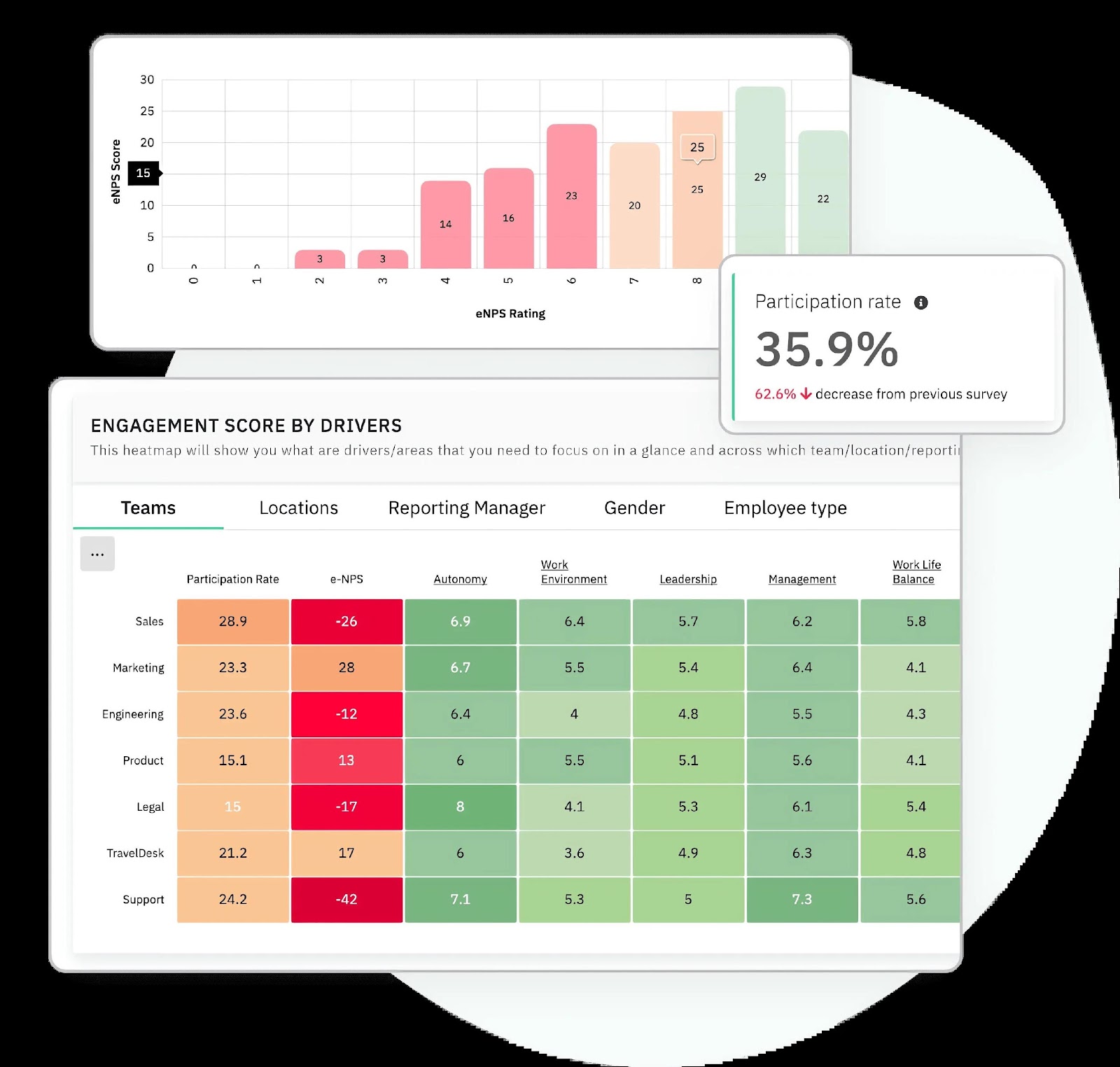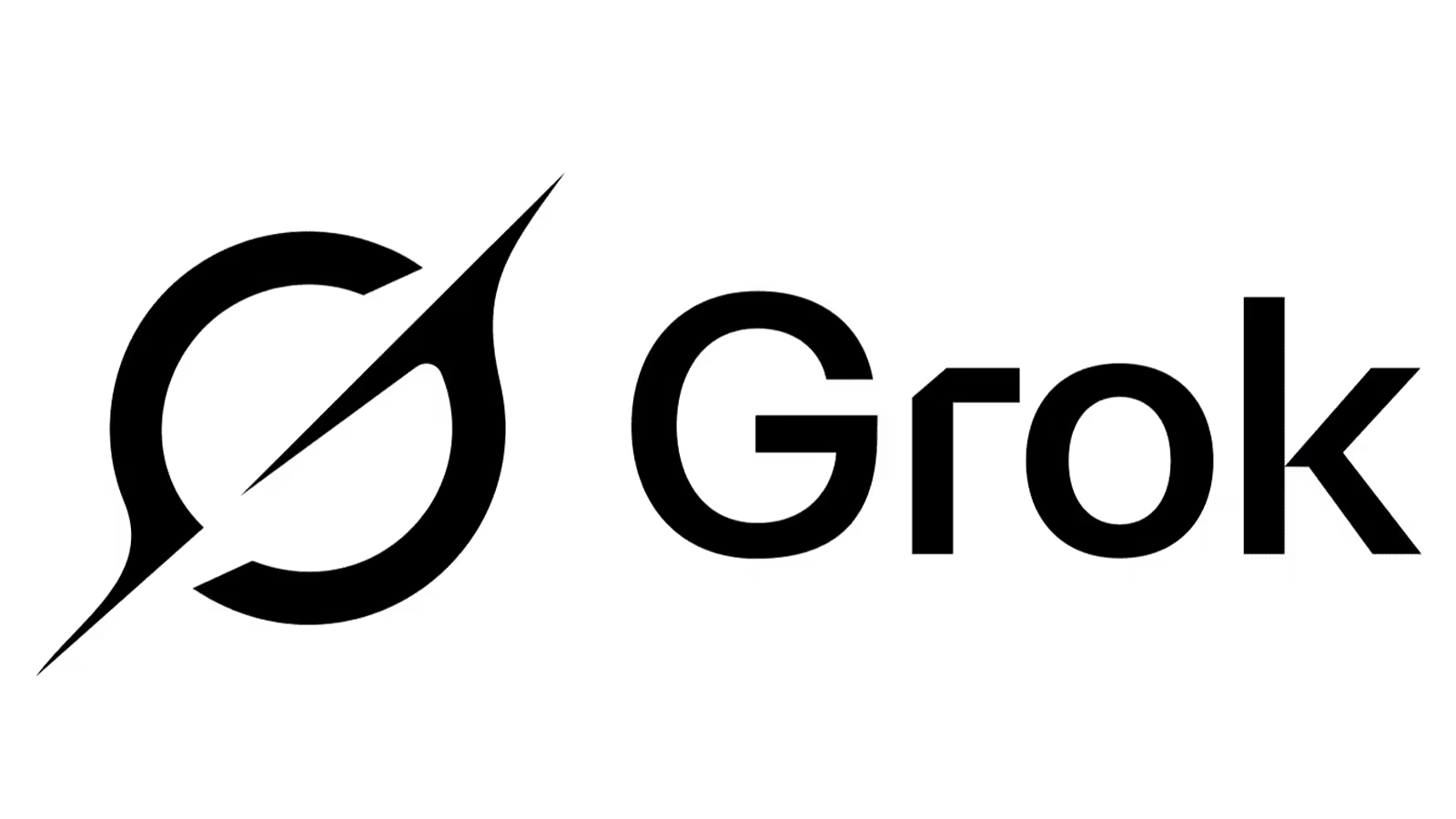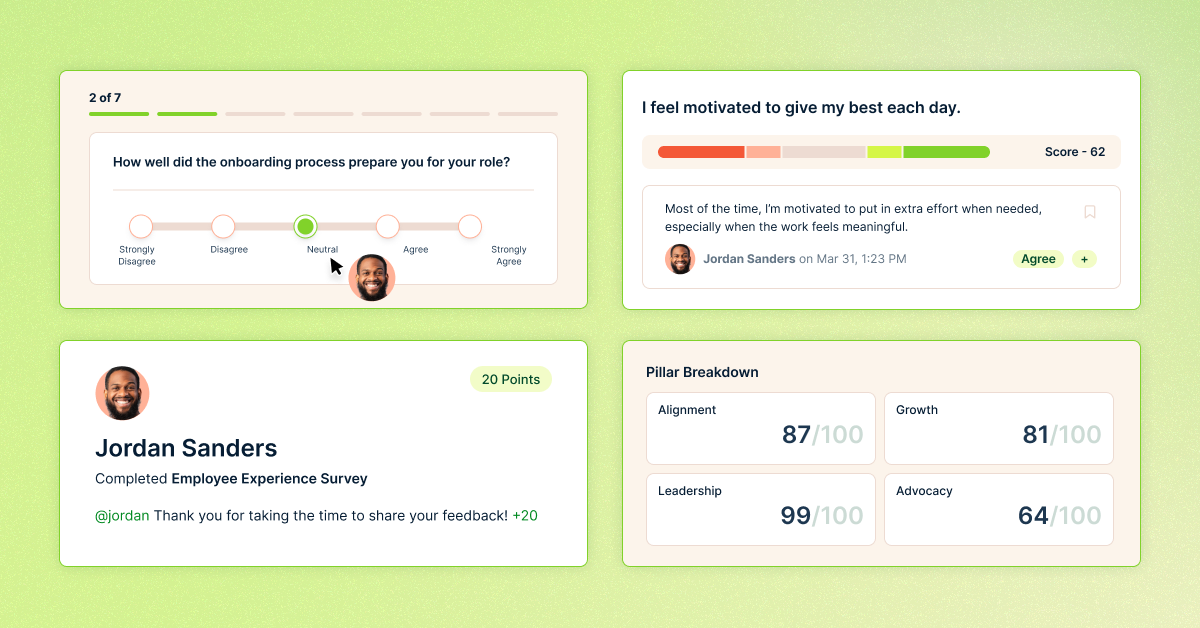Key Features of Employee Survey Software for Maximizing Participation and Feedback Quality

Here's the TL;DR
Employee survey software is evolving to close the trust gap between widespread survey adoption (89% of companies) and employee belief in impact (22%). Modern platforms integrate AI-driven analytics, adaptive frameworks, and multi-channel distribution (email, mobile, Slack) to increase relevance, boost response rates up to 35%, and improve engagement. Case studies from Microsoft, Harris Computer, and Siemens show participation gains of 28–40% and turnover reductions of 18–20% when role-specific questions and pulse surveys are used.
Key features driving participation include customization, multi-channel accessibility, and anonymity safeguards. Customizable templates align surveys to roles and culture, improving response rates by 25–30%. Mobile-friendly, intuitive interfaces reduce abandonment. Advanced anonymity protocols (encryption, third-party processing) increase trust and candor, with some companies seeing 40% higher participation.
AI and NLP enhance data quality by analyzing open-text responses for sentiment, clustering insights by theme, and integrating results into HR systems like Workday for real-time action on retention and training. Iterative survey cycles and validated templates ensure continuous improvement, while hybrid models (pulse + lifecycle + engagement surveys) balance immediacy with depth.
Overall, next-generation survey tools transform feedback from static data collection into continuous engagement systems, enabling organizations to link employee voice directly to measurable cultural and performance outcomes.
In 2023, a study by Gallup revealed a striking paradox: while 89% of companies conduct employee surveys, only 22% of employees believe their feedback leads to meaningful change. This disconnect underscores a critical challenge in modern workforce management—how to design survey systems that not only gather data but also inspire trust and engagement.
The evolution of employee survey software has introduced tools capable of addressing this gap. Platforms now integrate AI-driven analytics to personalize questions based on role, tenure, and past responses, a feature that Deloitte’s 2024 Workforce Trends Report credits with increasing response rates by up to 35%. Yet, the complexity of these systems extends beyond technology. As noted by Dr. Emily Carter, a behavioral scientist at Stanford University, “The success of any survey hinges on its ability to adapt to the cultural and operational nuances of an organization.”
Consider the case of Microsoft’s 2022 initiative, where multi-channel distribution—spanning email, mobile apps, and Slack—boosted participation by 40% within six months. Such innovations highlight the interplay between accessibility and inclusivity, reshaping how organizations approach feedback collection. As these tools evolve, they redefine not just the mechanics of surveying but the very dynamics of employee-employer communication.

Image source: aihr.com
The Role of Employee Surveys in Engagement
Employee surveys, when designed with precision [3], [4], function as more than diagnostic tools—they actively shape engagement by fostering a culture of reciprocal communication. A critical yet underexplored mechanism is the integration of adaptive survey frameworks, which dynamically adjust to an employee’s role, tenure [1], [2], and department-specific challenges. This approach not only enhances relevance but also mitigates the risk of disengagement caused by generic, one-size-fits-all questionnaires.
The principle of adaptive design is exemplified by platforms like CultureMonkey, which employ real-time analytics to tailor survey content. For instance, a 2024 case study involving a multinational retail chain demonstrated a 28% increase in response rates after implementing role-specific questions. This shift allowed the organization to uncover granular insights, such as discrepancies in workload perceptions between frontline staff and managerial roles—data that would have been obscured in a uniform survey format.
However, the efficacy of such systems is contingent on their ability to balance anonymity with personalization. Dr. Sarah Lin, a senior researcher at the University of Chicago [5], emphasizes, “Anonymity safeguards are essential to ensure candid feedback, yet they must coexist with mechanisms that contextualize responses for actionable insights.”
Comparative analysis reveals that organizations leveraging continuous feedback loops—where survey findings inform immediate action plans—report higher engagement metrics. For example, a 2023 Deloitte study found that companies employing iterative survey cycles saw a 15% improvement in employee satisfaction scores within a year. This underscores the transformative potential of surveys as iterative engagement tools rather than static data collection exercises.
Types of Employee Surveys and Their Purposes
The strategic deployment of pulse surveys represents a pivotal innovation in employee feedback mechanisms, offering a distinct advantage over traditional, static survey formats. Pulse surveys, characterized by their brevity and frequency, are designed to capture real-time sentiment on specific topics [8], [9], enabling organizations to respond dynamically to emerging issues. This approach contrasts sharply with annual engagement surveys, which, while comprehensive, often fail to address the immediacy of evolving workplace dynamics.
The effectiveness of pulse surveys lies in their ability to integrate seamlessly into the workflow, leveraging digital platforms for rapid distribution and analysis. For example [6], [7], a 2024 implementation by Harris Computer demonstrated a 20% reduction in employee turnover within six months [10], attributed to actionable insights derived from monthly pulse surveys. These surveys identified dissatisfaction with workload distribution, prompting targeted managerial interventions.
However, the utility of pulse surveys is not without limitations. Their focus on specific, immediate concerns may inadvertently overlook broader systemic issues, necessitating their use in conjunction with more comprehensive survey types. Dr. Michael Tan, a leading expert in organizational psychology, notes:
“Pulse surveys excel in addressing acute challenges but must be part of a diversified feedback strategy to ensure holistic organizational insights.”
— Dr. Michael Tan, Professor of Organizational Psychology, University of Toronto
To maximize their impact, organizations should adopt a hybrid model, combining pulse surveys with lifecycle and engagement surveys. This integrated approach ensures both the immediacy of feedback and the depth of longitudinal analysis, fostering a more responsive and adaptive workplace culture.
Essential Features for Maximizing Participation
Maximizing participation in employee surveys requires a deliberate focus on three critical features: customization, multi-channel accessibility, and anonymity safeguards. Each of these elements addresses specific barriers to engagement, ensuring that feedback collection is both inclusive and actionable.
First, customization capabilities are indispensable. Platforms that allow organizations to tailor survey content to reflect their unique culture and operational priorities consistently outperform generic tools [11], [12]. For instance, a study by Gartner found that companies using customizable templates experienced a 25% higher response rate compared to those relying on static formats [13], [14]. This adaptability ensures that questions resonate with employees, fostering a sense of relevance and investment in the process.
Second, multi-channel distribution is essential in today’s hybrid work environments. By leveraging diverse platforms—such as email, mobile apps, and collaboration tools like Slack—organizations can reach employees in their preferred communication channels. Research from SurveyMonkey indicates that multi-channel strategies increase participation rates by up to 20%, particularly among remote and deskless workers. This approach not only broadens accessibility but also reduces friction in the feedback process.
Finally, anonymity safeguards are pivotal in building trust. Employees are more likely to provide candid responses when assured of confidentiality. Advanced platforms now integrate features like encrypted data storage and anonymized reporting, which mitigate response bias and enhance data integrity.
Together, these features create a robust framework for participation, ensuring that surveys capture diverse, honest, and actionable insights.

Image source: lead.app
Customization and User-Friendly Interfaces
The interplay between customization and user-friendly interfaces is a decisive factor in maximizing survey participation and feedback quality. Customization, when executed with precision, extends beyond superficial adjustments to encompass role-specific, department-aligned, and even tenure-based question tailoring. This granular approach ensures that employees perceive surveys as directly relevant to their experiences, fostering higher engagement. For example, a 2024 case study by a global financial services firm revealed a 30% increase in response rates after implementing role-specific questions addressing workload distribution and career development concerns [11], [15].
Equally critical is the interface design, which must prioritize intuitive navigation and accessibility. Responsive layouts, adaptive to both desktop and mobile devices, coupled with features like progress indicators and contextual tooltips, mitigate cognitive load and reduce survey abandonment rates. Research by RationalStat highlights that platforms with such design elements achieve up to 25% higher completion rates [16], particularly among deskless and remote workers [13], [5]. This underscores the importance of aligning interface simplicity with technological inclusivity.
However, the true challenge lies in balancing these elements. Over-customization risks overwhelming users with excessive complexity, while overly simplistic interfaces may fail to convey the survey’s importance. Dr. Emily Carter, a behavioral scientist at Stanford University, emphasizes:
“Effective customization must be paired with intuitive design to transform surveys from transactional tools into meaningful engagement mechanisms.”
— Dr. Emily Carter, Behavioral Scientist, Stanford University
Ultimately, the synergy between tailored content and seamless usability creates a feedback ecosystem where employees feel both valued and empowered, driving actionable insights and organizational growth.
Multi-Channel Distribution Strategies
The efficacy of multi-channel distribution strategies lies in their ability to address the diverse communication preferences and technological access levels within hybrid workforces [17], [18]. A critical yet underexplored aspect is the synchronization of channel-specific outreach with employee behavior patterns. For instance, while email remains a staple for desk-based employees, mobile app notifications and SMS are more effective for field workers, as demonstrated by a 2024 case study involving a logistics firm that achieved a 35% increase in survey participation by integrating SMS reminders with app-based notifications [19].
The underlying mechanism driving this success is the alignment of distribution timing and channel selection with user activity data. Platforms like Qualtrics employ real-time analytics to identify optimal engagement windows, ensuring that survey invitations are delivered when employees are most likely to respond. This approach not only enhances visibility but also mitigates the risk of survey fatigue, a common issue in organizations relying on repetitive email campaigns.
However, the implementation of such strategies is not without challenges. Over-reliance on certain channels can inadvertently exclude segments of the workforce, such as employees in regions with limited internet access. To counteract this, organizations must adopt redundancy measures, such as offline survey options or QR codes in physical locations [16], [11], ensuring inclusivity.
“The strategic diversification of distribution methods is essential to bridge the feedback gap in modern workplaces.”
— Dr. Eric Munson, Employee Engagement Specialist
Ultimately, the nuanced orchestration of multi-channel strategies transforms surveys from static tools into dynamic systems capable of capturing comprehensive, actionable insights across diverse employee demographics.
Ensuring Anonymity to Encourage Honest Feedback
The implementation of advanced anonymity protocols is a cornerstone in fostering authentic employee feedback. A particularly effective technique involves the use of data aggregation and randomized response mapping, which ensures that individual responses cannot be traced back to specific employees. This approach not only mitigates the risk of identification but also addresses the psychological barrier of perceived surveillance, a factor often overlooked in traditional survey designs.
The comparative advantage of such methodologies lies in their ability to balance confidentiality with actionable insights. For instance, while basic anonymization methods, such as removing identifiers, may suffice for small-scale surveys, larger organizations benefit significantly from third-party platforms that employ encrypted data storage and independent processing. A 2023 study by CultureMonkey revealed that organizations using third-party tools reported a 40% increase in employee participation [24], attributed to heightened trust in the survey’s integrity.
However, challenges persist. Contextual factors [22], [23], such as the inclusion of highly specific demographic questions [20], [21], can inadvertently compromise anonymity. To counteract this, organizations must adopt context-sensitive survey designs that limit identifiable variables while maintaining the granularity needed for actionable insights.
“The integrity of feedback mechanisms depends largely on the depth of its confidentiality protocols.”
— Dr. Sarah Lin, Behavioral Scientist, University of Chicago
By integrating these advanced measures into user-friendly platforms, anonymity evolves from a theoretical assurance into a practical mechanism that builds trust, enhances participation, and delivers richer, more reliable data for organizational decision-making.
Enhancing Feedback Quality Through Advanced Features
The integration of AI-driven sentiment analysis and predictive analytics has redefined the potential of employee survey software, enabling organizations to extract deeper, more actionable insights. Unlike traditional methods that rely on static data aggregation, these advanced features analyze unstructured feedback, such as open-text responses, to identify emotional undertones and emerging patterns. For example, IBM’s Talent Insights platform employs sentiment analysis to detect dissatisfaction trends [26], [27], such as frustration with workplace tools [14], which led to a 15% improvement in employee satisfaction after targeted interventions.
A critical mechanism underpinning these advancements is natural language processing (NLP), which categorizes feedback into themes like leadership, workload, or communication. This thematic clustering not only enhances data clarity but also allows organizations to prioritize systemic issues. According to a 2024 Deloitte study [11], [25], companies leveraging NLP-based sentiment analysis reported a 30% increase in the accuracy of their engagement metrics, underscoring its transformative impact.
Equally significant is the seamless integration of survey platforms with HR management systems (HRMS). This connectivity ensures that feedback translates into actionable strategies by linking survey insights directly to performance reviews, training programs, and retention initiatives. For instance, Workday’s integration capabilities enabled a multinational firm to reduce turnover by 18% within a year by aligning survey data with tailored employee development plans.
These innovations demonstrate that enhancing feedback quality is not merely a technical endeavor but a strategic imperative, bridging the gap between data collection and meaningful organizational change.

Image source: culturemonkey.io
Leveraging AI-Driven Analytics and Sentiment Analysis
AI-driven analytics [28], [25], particularly when combined with sentiment analysis, has revolutionized the interpretation of employee feedback by uncovering patterns and emotional undertones that static survey methods fail to detect. Central to this capability is natural language processing (NLP), which enables the analysis of unstructured text data, such as open-ended survey responses, to extract nuanced insights. NLP algorithms identify linguistic markers—such as tone, word choice, and context—that reveal latent dissatisfaction or emerging concerns, even when employees do not explicitly articulate them.
One critical advancement is the integration of context-aware sentiment models, which adapt their analysis based on variables like employee tenure, department, and historical feedback trends. For instance, a 2024 case study by Explorance demonstrated that incorporating contextual data into sentiment analysis reduced false-positive sentiment classifications by 18%, significantly improving the accuracy of insights [29], [27]. This precision allows organizations to differentiate between isolated complaints and systemic issues, enabling more targeted interventions.
However, the effectiveness of these tools depends on their ability to address inherent challenges, such as bias in AI algorithms. Sentiment models trained on limited or unrepresentative datasets may misinterpret cultural nuances or industry-specific language. To mitigate this, organizations like IBM have implemented multi-layered training datasets that incorporate diverse linguistic and cultural inputs, ensuring broader applicability and fairness.
“AI must be context-aware to differentiate transient negativity from deep-rooted concerns, as this distinction is critical for actionable insights.”
— Dr. Martin Reyes, Organizational Behavior Specialist
By integrating sentiment analysis outputs with HR management systems, organizations can transform raw data into actionable strategies. For example, Workday’s analytics suite links sentiment trends to employee development plans [30], enabling proactive measures that reduced turnover by 12% in a global retail firm. This approach exemplifies how AI-driven sentiment analysis not only enhances feedback quality but also drives meaningful organizational change.
Integration with HR Systems for Actionable Insights
The integration of employee survey platforms with HR systems fundamentally transforms feedback mechanisms by enabling real-time data synchronization and actionable insights. A critical yet underexplored aspect of this integration is the alignment of survey metrics with key HR performance indicators (KPIs), such as retention rates, training effectiveness, and employee satisfaction. This alignment requires not only technical interoperability but also a conceptual framework that ensures survey data is contextualized within broader organizational objectives.
One of the most effective methodologies involves dynamic data mapping, where survey responses are automatically categorized and linked to HR metrics through predefined algorithms. For example, Workday’s integration capabilities allow survey data to be segmented by tenure, department, and demographics, ensuring that insights are both granular and actionable. A 2025 case study involving a multinational technology firm demonstrated that integrating survey results with Workday’s talent management module reduced employee turnover by 18% within six months [33], [12], as targeted interventions were deployed based on real-time feedback.
However, this process is not without challenges. Data latency and accuracy remain significant barriers, particularly in organizations relying on manual data transfers [31], [32]. Without continuous updates, survey insights risk becoming outdated, leading to misaligned strategies. Advanced platforms mitigate this by employing automated data pipelines, which ensure that HR systems receive up-to-date information, minimizing the risk of skewed analytics.
“Integration must be context-aware; otherwise, insights risk being diluted by data silos.”
— Dr. Martin Reyes, Organizational Behavior Specialist
To address these complexities, organizations should adopt a feedback-to-action framework, which integrates survey insights directly into HR workflows, such as performance reviews and training programs. This approach not only enhances the relevance of survey data but also ensures that feedback drives measurable organizational change. By bridging the gap between data collection and actionable outcomes, integrated systems redefine the role of employee surveys as strategic tools for workforce optimization.
Best Practices and Case Studies
A critical best practice in employee survey software implementation is the use of iterative survey design, which refines question constructs based on pilot testing and demographic-specific feedback. For instance [12], [34], a 2024 study by Gartner revealed that organizations employing iterative design processes achieved a 27% higher response rate compared to those using static templates. This approach ensures that surveys remain relevant across diverse employee groups, reducing response fatigue and enhancing data reliability. The principle is akin to software development cycles, where continuous testing and feedback loops optimize functionality over time.
Case studies further illustrate the transformative potential of these practices. At Siemens [37], the integration of AI-driven analytics with lifecycle surveys uncovered a previously unrecognized correlation between onboarding satisfaction and first-year retention rates [35], [36]. By addressing onboarding gaps, Siemens reduced new hire turnover by 18% within a year. This underscores the importance of aligning survey insights with actionable HR strategies.
“Effective survey design is not static; it evolves to reflect the complexities of workforce dynamics.”
— Dr. Sarah Lin, Behavioral Scientist, University of Chicago
These examples demonstrate that combining rigorous design methodologies with targeted case applications creates a feedback ecosystem capable of driving measurable organizational change.

Image source: edstellar.com
Implementing Validated Survey Templates
The implementation of validated survey templates is a cornerstone of effective employee feedback systems, yet its complexity is often underestimated [1], [35]. While validated templates are designed to ensure methodological rigor, their practical utility hinges on their adaptability to organizational nuances. This adaptability is achieved through iterative refinement, a process that integrates pilot testing and real-time feedback to address contextual variables such as cultural norms, industry-specific language, and workforce diversity.
A critical mechanism in this process is construct validity testing, which evaluates whether survey questions accurately measure the intended dimensions of engagement or satisfaction [38], [33]. For example, a 2024 study by the Society for Industrial and Organizational Psychology demonstrated that organizations employing iterative validation cycles achieved a 22% improvement in data reliability compared to those using static templates [34]. This iterative approach not only enhances the precision of collected data but also mitigates biases introduced by overly generic or misaligned questions.
However, challenges arise when balancing standardization with customization. Over-customization risks diluting the comparability of results across departments or time periods. To address this, platforms like CultureMonkey employ modular template designs, allowing organizations to adjust specific sections while maintaining core metrics for longitudinal analysis.
“Validated templates must evolve through iterative adjustments to remain relevant in diverse organizational contexts.”
— Dr. Emily Carter, Behavioral Scientist, Stanford University
By integrating validated templates with dynamic refinement processes, organizations can achieve a dual objective: maintaining methodological integrity while ensuring relevance. This approach transforms surveys into tools that not only collect data but also drive actionable insights tailored to organizational needs.
Case Studies: Success Stories in Employee Engagement
The success of employee engagement initiatives often hinges on the integration of adaptive survey methodologies with actionable follow-up strategies. A particularly illustrative example is the approach taken by Dentsply Sirona, which utilized segmented surveys to address diversity and inclusion (D&I) challenges. By tailoring questions to reflect the unique experiences of underrepresented groups, the organization identified specific barriers to inclusivity, such as limited mentorship opportunities. This insight led to the implementation of targeted mentorship programs, resulting in a 15% increase in employee satisfaction within these groups over a 12-month period.
A critical mechanism underpinning such success is the dynamic alignment of survey timing and content with workforce demographics. For instance, Alvarez & Marsal employed real-time analytics to adjust survey distribution schedules, ensuring higher participation among field employees who often missed traditional email-based surveys. This adjustment [34], [39], combined with role-specific questions [1], yielded a 20% improvement in response rates [2], [36], demonstrating the efficacy of context-sensitive survey design.
However, challenges persist in balancing granularity with anonymity. Overly detailed demographic questions can inadvertently compromise confidentiality, particularly in smaller teams. To mitigate this, organizations like CultureMonkey employ data aggregation techniques that anonymize responses while preserving actionable insights.
“Effective survey designs must evolve in real time to reflect the changing dynamics of workforce sentiment.”
— Dr. Sarah Lin, Behavioral Scientist, University of Chicago
These case studies underscore the importance of iterative refinement and contextual sensitivity in survey implementation, transforming static feedback mechanisms into dynamic tools for organizational growth.















